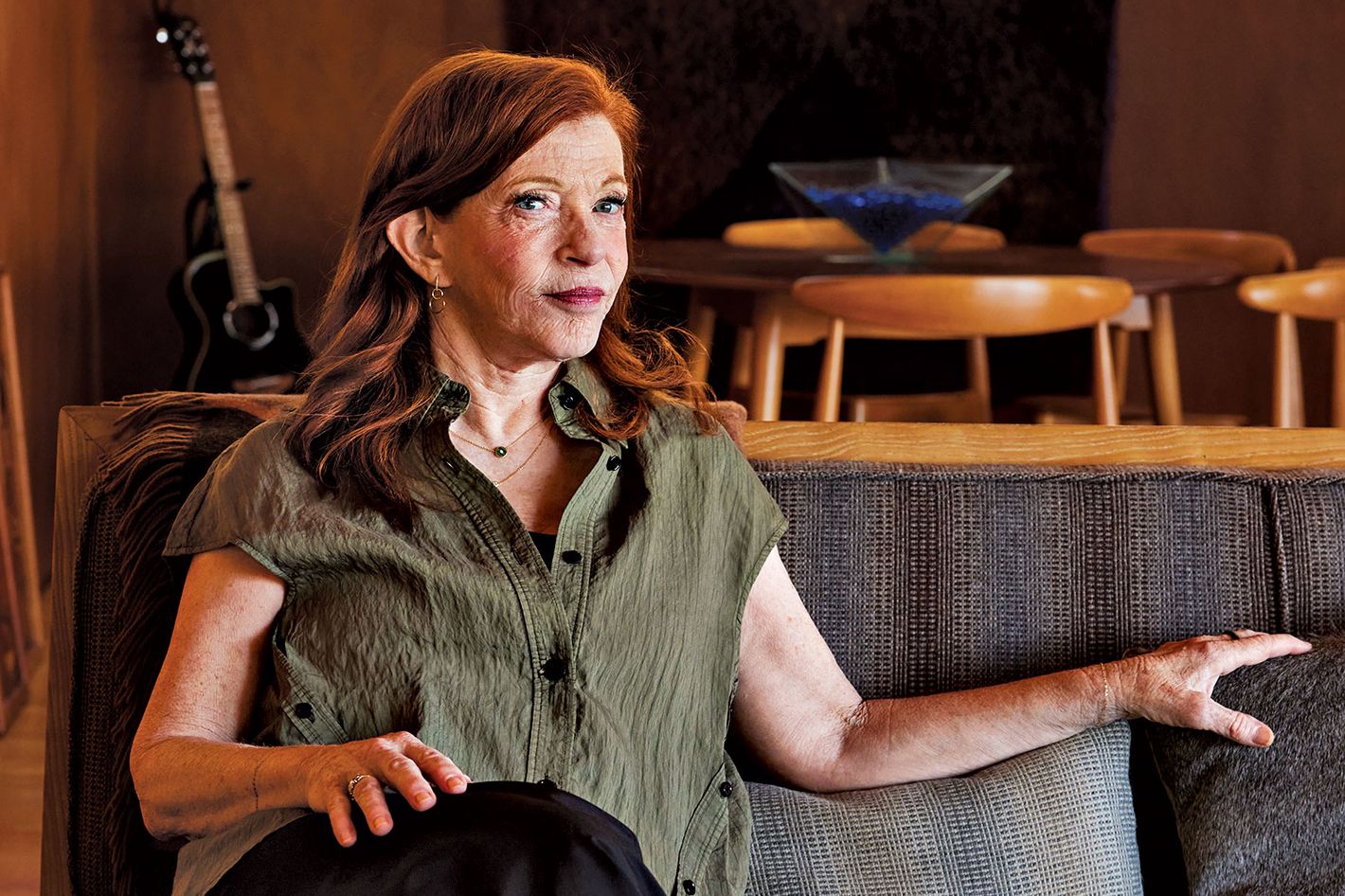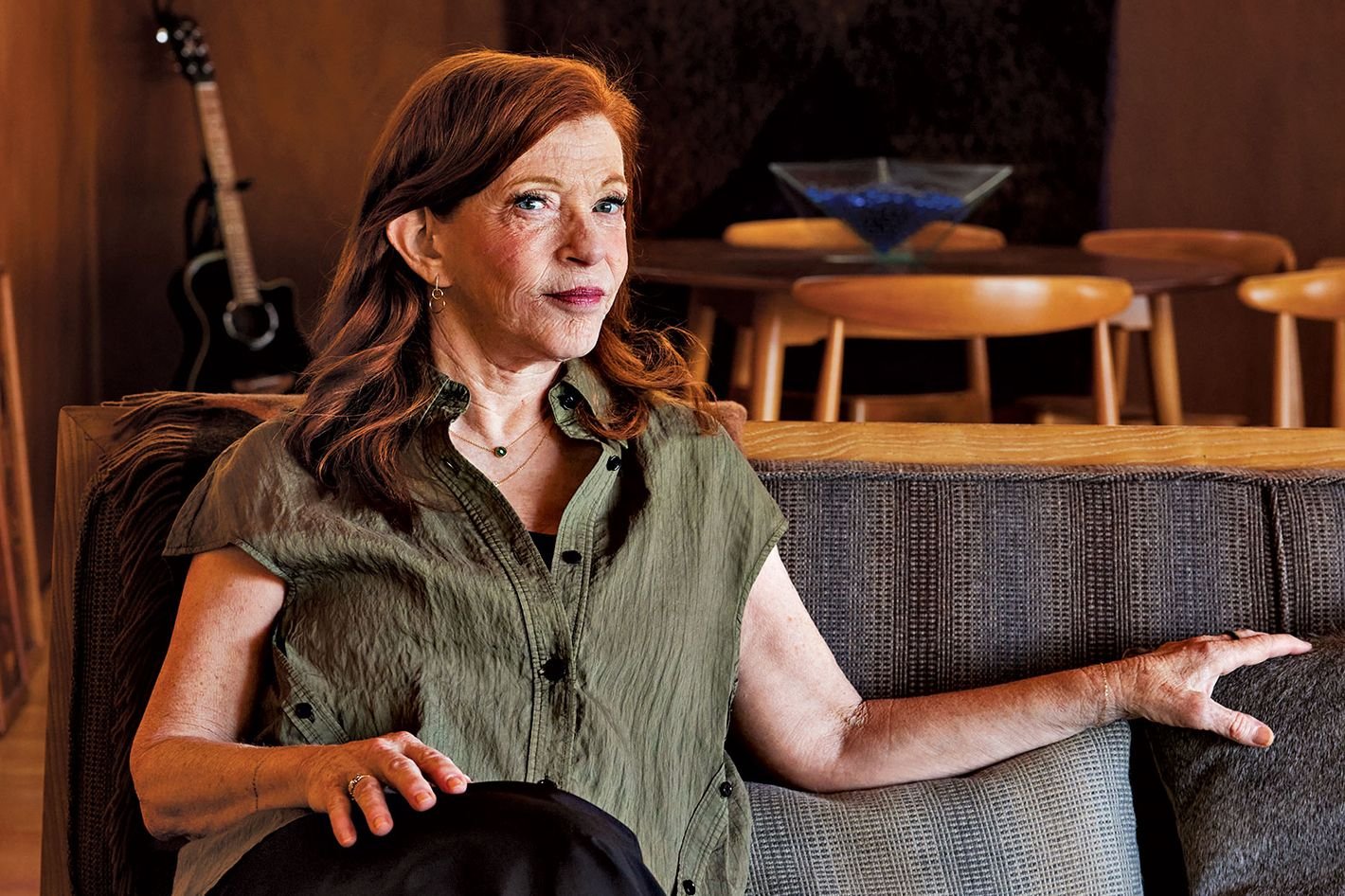
Once you’ve interviewed as many people as Susan Orlean has, you start to crave what she calls “counterprogramming.” Every magazine profile has its setting; every setting suggests activities that a journalist might find logical to do with their subject. In New York City, driving is not one of those. Which is why right after I meet Orlean in Soho, she gets behind the wheel of a borrowed car, installs me in the passenger seat, and heads directly for the Holland Tunnel. The writer, 69, lives in Los Angeles, but when she lived in Manhattan in the ’80s, she had two cars, one of them parked on the street — which meant she spent a lot of time hurrying up the sidewalk to check on it, craning her neck to see if this would be the day she’d find the windows smashed. Now, she steers us deep into the pit of New Jersey. We pass a wig store. Motels. Car dealerships. “The beauty of the surroundings is a bit … lacking,” she says. We drive by the mall called American Dream, and she sighs: “I’m so sad it has that name.” I suggest the name is honest. “Right, that’s true,” she says, laughing. “Maybe that is the American Dream, and we might as well admit it.”
One of the most prolific and successful nonfiction writers of her generation, Orlean made her beat out of no beat. One early victory at The New Yorker, where she has been on staff since 1992, was a “Talk of the Town” about how Benetton’s salespeople fold sweaters. She wrote a book, The Orchid Thief, that follows a plant dealer sentenced for flower poaching (it inspired the film Adaptation) and a feature for Outside about Maui surfer girls (which inspired Blue Crush). The Library Book, from 2018, is about the fire that destroyed L.A.’s Central branch.
Her latest book, Joyride, is a memoir. Around the onset of the pandemic, she started an exercise in writing about writing, reexamining her 1992 Esquire profile of a suburban 10-year-old, “The American Man at Age Ten.” She had donated her personal papers to Columbia, unearthing reporting notes (and rejection letters). The more she stared at her Esquire story, the more context from life it seemed to need. This was new. She’d always thought her writing required “the not knowing — that elevated sense of receptivity, like you just want to learn everything because you’re in this new world,” she says. “I felt lost because I knew the material.” She asked a friend to interview her, then read the transcripts. She fretted that the memoir genre was pretentious. In the summer of 2020, when she got wasted at her neighbor’s house and took to Twitter, she posted, “You know I am currently trying to write a memoir and feel like a clown because who cares abour [sic] my stupid life but maybe?” She got over it. She finished the book. It’s both the most personal one she has published and a romp through a thriving media landscape now lost. “I dreamed of becoming a writer, and then I became one,” she writes in Joyride’s intro, “and now I want to tell you every day why I wake up amazed by that fact.”
Before Orlean and her family moved to L.A., they lived in the Hudson Valley in a spread of stone and glass that slanted obliquely out the hillside and sold for nearly $3.5 million. “I would happily stalk my old house,” she says, “just to be creepy and weird.” We settle for the closer, more public Storm King Art Center, the sculpture park where she and her husband, John Gillespie, brought their son Austin when he was small; Orlean swears Austin, now a Tulane student, used to clamber up the artwork. “There are a lot of really ugly names in upstate New York,” Orlean observes as we pass the turnoff for Suffern. “Like Coxsackie. Wow, could you get worse than that?” We pass a for sale sign. “Let’s buy a house!” she says.
Storm King’s swooping meadows are plush with grasses just starting to brown. Orlean’s upstate house had meadows too, until she and Gillespie razed them in a fit of tick elimination. Lyme disease (she’s had it twice) doesn’t figure in her worst moments, though. Her memoir’s most despairing sections are about her first marriage, to Peter Sistrom, a lawyer who worked for Mario Cuomo in the ’90s and was New York’s assistant attorney general in the mid-aughts. Orlean’s book depicts an intelligent, depressive man plagued by his wife’s triumphs; he ruined the publication days of two of her books by revealing he was having affairs. They divorced in 1999 after 16 years of marriage, and Sistrom died in 2021. “He wasn’t a sadist,” says Orlean, a woman who has done a lot of therapy. “He just had some commitment to being unhappy that I never understood.” Dragging out these memories was a grind. Worth it, though, Orlean figured, since readers love confessional stuff. “Well,” she says, crunching down the path, “people never react the way you expect them to.” So far, what everyone wants to talk about is what she calls, with a groan, “the bygone days of journalism.”
Can you become a Susan Orlean without the conditions that created her? In the late ’80s, when she was still a freelancer for The New Yorker, her editor accepted her pitch for a long feature about an Ashanti prince working as a cabdriver in New York. She asked her editor when she should file. “When it’s finished,” he said. Her subject was from Ghana; should she go there? “If you think you should, you should.” How much would she be paid? “It will be sufficient.” Orlean remembers that genteel, no-contracts environment beginning to grow more formal under Tina Brown. “I hate all these stories about Condé Nast,” she says, referring to coverage of books such as Michael M. Grynbaum’s Empire of the Elite about the publisher’s erstwhile excess. “It implies that everybody was an idiot who wanted to fly the Concorde and eat caviar. It avoids the central fact, which was there were a lot of people trying to write really good stories, and often that meant being able to go back. I remember the first time The New Yorker told me I had to do all the reporting on one trip. I felt, Oh, this is not the way I like to do business.” I’m still digesting the idea that multiple reporting trips was once the standard — I started my career in the dregs of the past recession — when we arrive at the Storm King café, where Orlean insists on paying for my sandwich. “One less thing for you to worry about expensing,” she says.
During The New Yorker’s most permissive era, Orlean watched boundarylessness undo colleagues like Joseph Mitchell, a living legend adrift without a deadline and left to whittle away his stories to the vanishing point. Now, she watches writers hustle their wares on Substack, where Orlean maintains a newsletter she says helps her “keep loose.” (She scored a hit with a post about ordering a Dries Van Noten outfit from Ssense — a site she calls “the SiriusXM of fashion” — and getting billed for more than $2,000 in tariffs.) Cruising back to Manhattan, Orlean allows that if there’s anything anyone should be jealous of, it’s that she had been encouraged to pursue ideas most magazine editors would dismiss as small. However, she says, “I don’t think smallness is in itself a virtue. Writers have to figure out how to make a small story seem urgent. They have to sell it. They can’t just say, you know, ‘A seven-year-old cat — isn’t that a cool story?’ No, it’s not.” Orlean drives on, then smiles. “I’m suddenly thinking, What’s so wrong about that? ” she says. “Now I’m obsessed with doing a story about a seven-year-old cat.”


